6 Artificial Intelligence Examples
Best Practices for Using AI in Everyday Life
The Best of Both Worlds: Merging AI with Human Insight
How Teams Use AI Today
Marketers know the actual value of their work lies in separating high-impact tasks, like creative brainstorming and strategy, from the low-impact, tedious work.
And here's the kicker: our report on AI Trends for Marketers highlights that 90% of marketers say these tools free them from those mind-numbing tasks.
So, how exactly are teams using AI today? Let's find out.
Content Creation
Generative AI tools, like Jasper for text generation and Midjourney for image creation, support content creation by producing text, crafting images, and even generating music or code, depending on your input and requirements.
It's not just hype — 48% of marketers in our survey already use these tools to craft content. AI connects the dots, fills in the blanks, and turns ideas into something tangible.
Suppose you're working on a campaign. You have the concept but need visuals and catchy copy.
This is where AI steps in. It generates options and tweaks them based on your feedback; voila, you've got custom content in a fraction of the time. It’s all about working smarter, not harder. For instance, check out how you can use AI to craft a blog post in just 10 minutes.
Data Analysis and Reporting
AI tools automate complex data analysis and transform insights into easy-to-understand reports and compelling visualizations.
Here's something to think about About 45% of marketers in our survey use generative AI for this exact purpose. But why is this shift so crucial?
Creating quarterly reports previously was a marathon task. Data analysts and marketers sifted through mountains of data from different platforms for a couple of insights.
AI now does the heavy lifting by sifting through data, spotting trends, and bringing it all together in sleek presentations. ChatSpot, for example, integrates with our CRM to generate instant progress reports.
An automated, integrated process saves time and results in smarter, more informed decision-making.
Research and Inspiration
Imagine brainstorming for a new campaign only to hit a roadblock in the ideation process. AI kick-starts your brainstorming process by providing endless inspiration and research possibilities.
Here’s how many marketers in our survey use generative AI for research.

With access to massive databases of creative content, AI generates ideas based on popular trends, audience preferences, and past successful campaigns. It also supports keyword research, content optimization, and competitor analysis.
And the best part? AI can do this in seconds, giving you more time to focus on bringing those ideas to life.
Of course, take everything with a grain of salt and use your critical thinking skills. AI may be advanced, but there's always a risk of creating inaccurate or biased content. Use AI to get past your creative block and spark new ideas, not to replace your creativity and expertise.
Customer Behavior Prediction
Using extensive databases, AI identifies patterns in consumer interactions and preferences to predict customer behavior. It combines this data with insights from neuroscience studies for a deeper understanding of how customers think and respond to stimuli.
Why is this important?
It‘s all about getting into your customer's head. Take Predict AI by Neurons, for example. It's built on a massive database with eye-tracking data from over 120,000 people and more than 100 billion brain response data points.
What does this mean for you? In seconds, Predict gives you insights into how and why customers respond to your ads and your brand.
Vizit follows a similar tangent. The AI-powered tool gives you data on what images and designs motivate your customers to click the "buy" button.

This knowledge lets you tailor your products and marketing strategies to align perfectly with your audience's wants and needs. Instead of just shooting in the dark, you’re making informed decisions.
When you understand your customers better, you create experiences that resonate. This leads to happier customers and a more memorable brand.
6 Artificial Intelligence Examples
Where generative tools are one side of the AI marketing coin, predictive analytics represent the other. Predictive analytics uses AI to classify data and forecast future trends, customer behaviors, and market dynamics.
Predict domain authority.
Domain authority is a search engine ranking score that predicts how likely a website is to rank on search engine result pages. The all-in-one SEO tool, Moz’s Domain Authority (DA) checker, is one of the best (if not the best) tools.

DA estimates a site's potential to rank. This way, SEO professionals prioritize their efforts better.
Sites with higher DA are more likely to rank well, giving SEOs an idea of how challenging a field is to rank well in. SEOs, marketers, and PR professionals can also identify valuable link-building opportunities using DA's link quality assessment.
According to Chima Mmeje, a senior content marketing manager at Moz, DA uses a complex neural network instead of the simpler linear model still used by industry peers. The change enhances the platform’s ability to understand link quality and detect spam.
"While DA doesn‘t forecast rankings directly, it relies on Moz’s proprietary internal metrics, such as link counts, Spam Score, and link distributions, to estimate a page‘s potential to rank well. This upgrade helps users better understand and improve their website’s standing in search results," says Mmeje.
What we like: Predictive AI processes and analyzes large volumes of complex data far better than traditional methods. Identifying and understanding patterns in search engine behavior, backlink profiles, and other key ranking factors provides deeper insights and more accurate predictions about a site's potential to rank well.
Implement predictive lead scoring.
How do you identify the most promising leads? That's where predictive lead scoring comes in.
Predictive lead scoring uses AI to evaluate potential customers based on their likelihood to convert. In our webinar, "10x Your Marketing & Sales Productivity with ChatSpot AI by HubSpot," RevOps consultancy and HubSpot partner ScaleOps highlighted how they use ChatSpot for precisely this.
They create an ideal customer profile based on past buying behaviors and then pinpoint which prospects fit this profile best.

But why is this so crucial? Predictive lead scoring takes the guesswork out of the equation.
It uses data, not hunches, to make predictions. This means less human error and biases and more efficient targeting of the right leads.
The result? Your sales team focuses their efforts where they count the most on leads more likely to convert.
What we like: AI removes the reliance on intuition and replaces it with data-driven insights, resulting in greater accuracy and efficiency in lead targeting.
Classify customer support tickets.
Ever wonder how big players like Zapier keep their products top-notch and their customers happy?
Here's an AI trick from Reid Robinson, Zapier's Lead Product Manager. He uses Zapier to pull in product support issues and then hands them over to GPT-4 for sorting and analysis.

Every week, he gets a report highlighting the main issues to tackle. Fixing problems before they blow up polishes Zapier's products and shows customers it cares about the experience they’re delivering.
What we like: Anything that supports the customer support process and makes it more efficient is a win. A proactive approach to help issues shows dedication and a desire to put customers first.
It reduces the time and effort spent on manual sorting, freeing up valuable resources you can use for other stuff.
Conduct regular data analysis.
Data analysis doesn't have to be a monthly headache. Reid Robinson at Zapier makes data analysis a breeze with the new Assistants API feature.
"Export data every week, get your ChatGPT Assistant to analyze the data with Code Interpreter, and then output the analysis with a visual chart in Slack," Robinson says.

What makes this stand out? It's the consistency and ease. You're getting these insightful visual reports without fail every single week. This regularity means no more data backlogs or last-minute rushes.
You're always up-to-date and making informed decisions based on the latest data.
What we like: Regular AI-assisted data analysis like this streamlines workflows and ensures that your team is always in the loop with the freshest insights. It's a smart way to stay ahead.
Create a centralized data hub.
ASUS, the multinational computer, phone hardware, and electronics manufacturer, has offices worldwide.
Its business intelligence team oversees global marketing investments and strategy, with each regional branch reporting marketing activities at different times, in various formats, and on diverse platforms.
This lack of standardization created a massive hurdle. To fix this, ASUS uses Improvado, a predictive AI platform, to establish a centralized data hub.
This hub made a unified source for the organization's diverse data needs, including Management, Data Analytics, Business Intelligence, and Digital Marketing.
The hub connects to Google Data Studio templates, which are automated and centralized, with custom models for filtering data by regions, products, and marketing campaigns.
This centralization improves data availability and facilitates quicker experimentation and deeper insights. ASUS takes a unified approach to handling data to save time and resources — up to 80 to 100 hours per week in IT and 30% annually in marketing.
Conduct deeper SEO research.
Standard SEO research focuses on basic keyword analysis and surface-level content evaluation.
The problem with this approach? It often misses the deeper intricacies of search engine algorithms. It also overlooks the importance of understanding user intent, content context, and the complex relationship between ranking factors.
You create too simplistic strategies not fully aligned with modern search algorithms.
B2B SaaS agency Stratabeat does things differently.
Tom Shapiro, CEO of Stratabeat, highlights how they use marketing tools based on natural language processing models from Google Cloud Platform, IBM Watson, and OpenAI as part of their SEO stack,
He adds: "The platform enables us to conduct deeper SEO research, more thorough Google SERP analysis, and SEO scoring of content."
The AI-driven approach better explains how search engines rank and perceive content in search results pages (SERPs). It‘s no longer just about keyword density in SEO scoring; it’s about the overall relevance, quality, and context of the content in relation to user queries.
What we like: This method provides insights beyond traditional metrics, leading to better search engine ranking and content optimization.
5 Generative AI Examples
There’s a lot of optimism related to AI. Our latest survey data shows that 68% of marketing leaders at the director level and above believe that fully implementing AI and automation would drive unprecedented business growth.
Here are five ways generative AI is making a huge difference.
Fine-tune content drafts.
If you use AI correctly, it becomes your editing buddy. Think of it as a sophisticated co-pilot that helps refine your content drafts.
AI tools can suggest grammar, style, and tone improvements, ensuring that your message is clear and resonates with your intended audience.
Wordtune is an AI assistant that fixes errors, understands context and meaning, paraphrases text based on writing tones, and generates text based on context.

Ben Pines, Director of Content at Wordtune, uses the tool to refine his content writing process in three ways:
"The first is to explore and expand on the topic I want to write about," Pines starts. "Let's say I want to write about adapting content to various social media mediums, and I want to give an example of a piece of content adapting it to the platforms."
In this case, Pines says he would use AI to summarize the tone of each platform quickly.
"I could do this myself, but AI saves me a lot of brain power when exploring my ideas," he says.
Pines says the second use case is to expand on sentences and rephrase content.
"When I write, it's a very intuitive process involving getting to the flow. I can make leaps from one point to another, and AI does great work mitigating those leaps for my readers," he explains. "My first draft of a sentence is not always perfect, so I rephrase some of the sentences using AI to make them clearer."
The third use case Pines discusses is editing. He notes that gaps and mishaps always happen when you write. Going over the content with AI's extra eye has proven to be very helpful.
"I use these three methods no matter the writing task: email, social media posts, and long-form articles. While the writing process for each piece can be very different, I stick to these three use cases to ensure I keep my content while retaining my style," Pines says.
At the same time, Ben also focuses on the "assistant" part of using AI, ensuring it supplements his thinking instead of replacing it.
What we like: Ben pointed out how important it is to maintain your style and voice when using AI for writing.
He also highlights the versatility of AI in different types of writing tasks, showing that it can be a helpful tool no matter what kind of content you create. It's up to you to figure out where these tools fit into your workflow.
Maintain a fresh link-building strategy.
The email finder tool Hunter.io team uses generative AI to keep its link-building strategy fresh and monitor if any links have fallen off.
Why is this important? Any marketer knows that a link-building strategy is essential to improving SEO and driving traffic to your website. They also know that keeping track of all those links can be a massive headache.
Antonio Gabric, Outreach Manager at Hunter, recognizes how short the lifetime of backlinks is.
"We discovered that in less than two years of actively building backlinks, we lost around 9% of all backlinks built," Gabric says. “Generative AI helped us reclaim over 50 backlinks in less than a month."
Gabric shared the following steps to help you level up your link-building strategy.
- Collect all backlinks in a spreadsheet.
- Build a Google Apps Script with the help of AI that will automatically check if the specific URL still links to our target page.
- Run the script.
- Get results in less than a few minutes.
You can ask ChatGPT to help you along this process. After collecting backlinks in a spreadsheet, Gabric asked AI to help him build the Google Apps Script.

You’ll get a code with all the instructions to make it work.

"Usually, the code won’t work from the first try, but you should paste the errors you get in Google Sheets as a prompt, and after a few iterations, you’ll have a working script," Gabric notes.
Here’s the output:

What we like: Manually checking hundreds of links is time-consuming and tedious. AI allowed Hunter to automate this process and save time. They could then reshift to other marketing tasks.
Connecting AI to a Google Apps script made the process much easier and more efficient.
Automate content summaries
Snorkel.ai is a data-centric AI platform that transforming manual AI development processes into programmatic solutions. Matt Casey, the Data Science Content Lead, has incorporated generative AI into the marketing strategy at Snorkel AI.
"I use a Python pipeline built on OpenAI's APIs to automate the generation of content summaries and sample tweets for articles on our blog, as well as some early drafts of content," he says.
Casey says he recently developed a new workflow with OpenAI's playground.
"We have a conference coming up that includes pre-recorded content, and we want to make a strong promotional push focused on that content in the days after the conference," he says.
He recalls, "To that end, we wanted to pre-package blog posts around these presentations and do so as quickly as possible."
So, how does Matt achieve this?
The workflow goes like this.
1. Get an automated presentation transcript (we're using Descript, but other options exist).

2. Paste that transcript into OpenAI's playground.
3. Ask GPT-4 to summarize the transcript.
4. Ask GPT-4 to write an outline for a blog post based on that outline.

5. Prompt GPT-4 to write an article that matches that outline using the transcript for reference.
What we like: This is a fantastic solution for businesses that repurpose content. Repurposing pre-recorded content into blog posts can be time-consuming.
This approach ensures you don't pile up dust on pre-recorded content and can squeeze out more value from the time spent developing it.
Create custom blog images.
Digital marketing agency for SaaS business Singularity Digital creates custom blog headers using Midjourney. Stock images, while convenient, fall flat because they lack originality. Custom blog headers, on the other hand, stand out.
Not only do they align perfectly with the content‘s theme, but they also reflect your brand’s identity.
Here’s how Patrick Herbert, Director at Singularity Digital, uses Midjourney:
1. Go to Midjourney and look through the Explore page using keywords related to your blog, industry, and brand. Find some designs you like and copy the prompt.

2. Go to the Midjourney discord and paste the prompt in.

3. Review your results and regenerate if needed. You can experiment with the prompt to get variations on the images.

4. Upscale one of the images you like and save it.

5. Upload that to your Canva design and remove the background with the background removal tool by clicking on the image and then “edit photo” in the top right corner.

6. Play with your design as much or as little as you like, then export it from Canva and upload it to your website.

What we like: Custom images add a lot of personality to your blog posts. You can also repurpose them for social media posts.
Midjourney provides endless options for unique, branded blog headers without breaking the bank or taking up hours of your time.
Improve internal content distribution.
Critical information often gets buried under a pile of emails or lost in a sea of intranet pages in most organizations. Efficient internal content distribution ensures every team member can access necessary information easily.
It also adds fuel to your employee advocacy strategy. When employees know what you’re up to and have content to repost, they actively participate in your brand's story.
Sprout Social’s research shows that 62% of all employees would post company content to their personal pages if their company wrote it for them.
Providing employees with ready-to-share, engaging content keeps them informed and turns them into powerful brand advocates.
Matt Casey at Snorkel.ai has developed a quick and convenient way to distribute internal content.
"I built an earlier genAI pipeline to expand my internal content distribution capacity. This one — which is a fully automated job — checks the blog for new content every 15 minutes," he says.

"When it finds new content, it generates a summary and a few sample tweets and sends the entire package to a private channel on Slack," he says.
He explains, "I then copy that post into our company-wide marketing channel, edit it as needed, and send it out. This has been a huge help in getting the word out about new content across the company."
Here’s what the Slack update looks like:

What we like: Keeping everyone in the loop is a great way to ensure that employees are well-informed about company updates and initiatives.
Automating the process allows team members to access and share content without wasting time searching for it.
Podcast: 6 AI Growth Hacks Top Marketers Don't Want You To Know

Click here to listen to the full episode.
Best Practices for Using AI in Everyday Life
AI is never a replacement for your own thinking. Here are three best practices to balance how you use AI:
Learn how to write prompts.
The quality of AI‘s output hinges on the input it receives. This is where prompt engineering comes into play. It’s a skill that involves crafting clear, concise, and powerful prompts to guide AI toward producing the desired results.
Here’s a thread from Justin Fineberg, Co-Founder at Cassidy, a tool that allows you to create customized AI assistants on how to write ChatGPT prompts.

Fact check the output.
Always cross-reference AI output with reliable sources. This step is especially important when the output involves data, historical facts, or specialized knowledge.
Why? AI is a tool, not an infallible source. It‘s a blend of technology and the data it’s been trained on, which has limitations or biases.
Almost half of marketers in our survey who use generative AI say they’ve received information that they know is incorrect. What’s more concerning? Only 27% are very confident they would know if the information were inaccurate.
A quick way to do this is by heading to Google. Look for reputable sources that corroborate the AI's output. The fresher the data, the better, as this ensures relevance and accuracy.
Don't over-rely on AI.
AI’s great, but recognize its limits, too. Not every task is right for an AI tool.
Jobs that demand creativity, originality, personal opinions, or unique perspectives often don't yield the best results when left to AI.
For instance, tasks involving controversial or political topics could result in biased or oversimplified outcomes if tackled solely by AI.
Instead, strike a balance. Use AI as a tool to augment your skills, not replace them.
Use it for data-driven tasks, routine inquiries, and basic content generation and reserve tasks that require deep human insight, emotional intelligence, and ethical judgment for yourself.
It’s an incredibly powerful tool, but it works best when complemented by human creativity and critical thinking.
Improve your editing skills.
Want to get the best out of AI-generated content? It starts with honing your editing skills.
Think of AI as your initial draft writer. It'll give you a great starting point, but the real magic happens in the editing phase.
Here are two resources to start with:
- The Cutting Room by Tommy Walker. A YouTube series where industry-leading marketers talk about their content-marketing philosophy, process, and pre-game before they edit an article live.
- How to Edit by Ryan Law. A self-paced video course that teaches you how to self-edit your work.
When you know how to edit, you fine-tune the language, style, and ensure the content aligns with your voice and goals. This is where you add your personal touch, tweak nuances, and make sure everything is just right.
Stay updated with newsletters
AI advancements are as important as the tech itself. New tools, updates, and techniques emerge regularly.
Keep yourself updated with the latest news to ensure you’re making the most of it. Newsletters are a great way to do that. You can keep up with AI news by subscribing to these newsletters:
- AI Breakfast: A comprehensive analysis of the latest AI projects, products, and news every Monday, Wednesday, and Friday.
- The Rundown: Get an overview of the latest news, tools, and step-by-step tutorials in this daily newsletter.
- AutoGPT: A weekly analysis from experts on the latest AI projects, products, and news.
The Best of Both Worlds: Merging AI with Human Insight
Each of the examples covered in this piece highlights one common theme: the most effective use of AI comes not from relying on it exclusively but from combining its capabilities with human insight and expertise.
AI‘s computational power and human creativity, judgment, and intuition create a powerful dynamic that enhances decision-making, problem-solving, and innovation.
This blend of tech and human touch is the cornerstone of a future where AI doesn’t just automate tasks but also enriches our understanding.
Artificial Intelligence




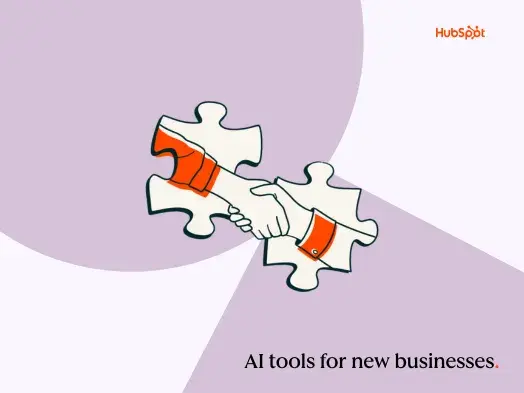
![AI email subject lines that drive 3x more revenue and actually convert [+ exclusive insights]](https://53.fs1.hubspotusercontent-na1.net/hubfs/53/ai-email-optimization-1-20251014-4500151-1.webp)

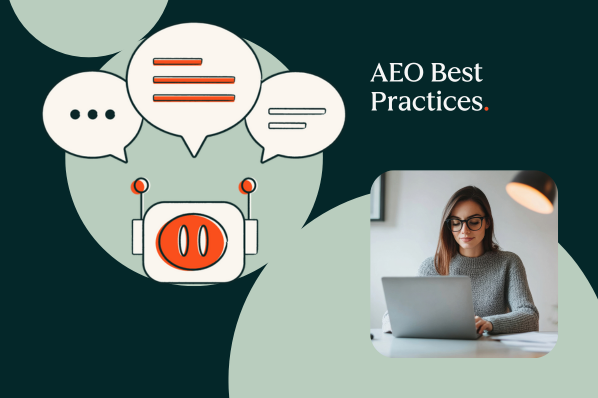
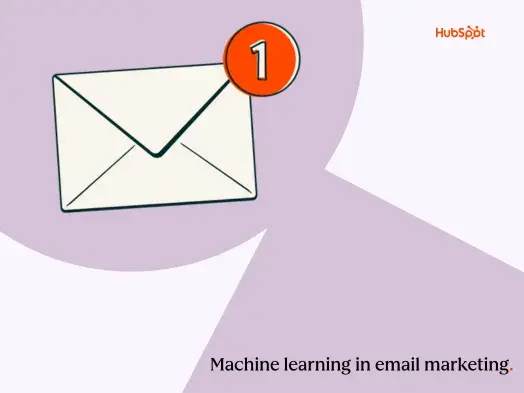
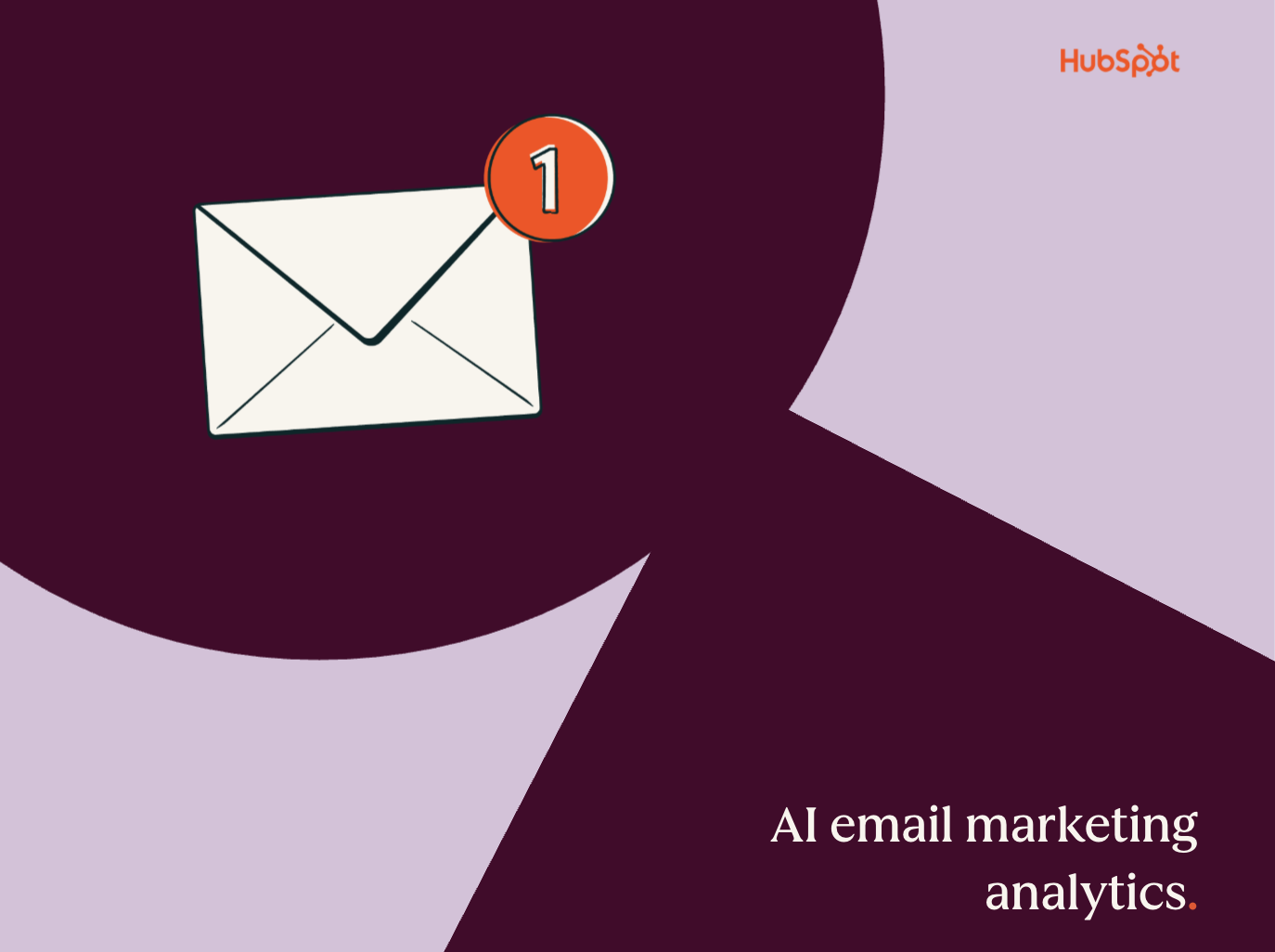

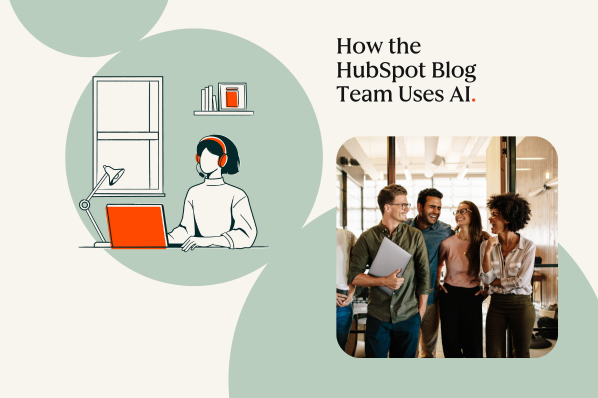
-1-20250905-2237709%202.webp)